1-Aminopyrene
Synonym(s):1-Pyrenamine;3-Aminopyrene
- CAS NO.:1606-67-3
- Empirical Formula: C16H11N
- Molecular Weight: 217.27
- MDL number: MFCD00004140
- EINECS: 216-521-3
- SAFETY DATA SHEET (SDS)
- Update Date: 2023-11-17 18:01:30
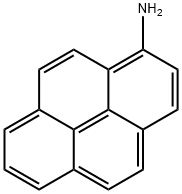
What is 1-Aminopyrene?
Chemical properties
yellow-green powder
The Uses of 1-Aminopyrene
1-Aminopyrene is used in the synthesis of novel fluorescent nanoscale ionic silicate platelets for use in bacterial detection and other biosensor applications.
The Uses of 1-Aminopyrene
It acts as a precursor molecule for production of other fluorescent probes such as 1-Azidopyrene, APTS, and N-(1-Pyrene)iodoacetamide.
What are the applications of Application
1-Aminopyrene is a precursor molecule for production of other fluorescent probes
General Description
Colorless crystals. Yellow needles from hexane, melting point 117-8°C.
Reactivity Profile
1-Aminopyrene neutralizes acids in exothermic reactions to form salts plus water. May be incompatible with isocyanates, halogenated organics, peroxides, phenols (acidic), epoxides, anhydrides, and acid halides. May generate hydrogen, a flammable gas, in combination with strong reducing agents such as hydrides.
Fire Hazard
1-Aminopyrene is probably combustible.
Purification Methods
1-Aminopyrene [1606-67-3] M 217.3, m 117-118o, pK 1 2.91 (50% aqueous EtOH), pK 2 2.77 (50% aqueous EtOH). Crystallise it from hexane. [Beilstein 12 IV 3460.]
Properties of 1-Aminopyrene
| Melting point: | 115-117 °C (lit.) |
| Boiling point: | 347.82°C (rough estimate) |
| Density | 1.1227 (rough estimate) |
| refractive index | 1.8230 (estimate) |
| storage temp. | Keep in dark place,Inert atmosphere,Room temperature |
| solubility | Chloroform (Slightly), Methanol (Sparingly) |
| form | Powder |
| pka | 4.32±0.30(Predicted) |
| color | Yellow to green |
| Water Solubility | Insoluble in water (0.576 mg/L at 25 deg C). |
| BRN | 1875737 |
| Stability: | Stable. Incompatible with strong oxidizing agents. |
| CAS DataBase Reference | 1606-67-3(CAS DataBase Reference) |
| NIST Chemistry Reference | 1-Aminopyrene(1606-67-3) |
| EPA Substance Registry System | 1-Pyrenamine (1606-67-3) |
Safety information for 1-Aminopyrene
| Signal word | Warning |
| Pictogram(s) |
 Exclamation Mark Irritant GHS07 |
| GHS Hazard Statements |
H302:Acute toxicity,oral |
| Precautionary Statement Codes |
P264:Wash hands thoroughly after handling. P264:Wash skin thouroughly after handling. P270:Do not eat, drink or smoke when using this product. P301+P312:IF SWALLOWED: call a POISON CENTER or doctor/physician IF you feel unwell. P501:Dispose of contents/container to..… |
Computed Descriptors for 1-Aminopyrene
| InChIKey | YZVWKHVRBDQPMQ-UHFFFAOYSA-N |
New Products
4-Fluorophenylacetic acid (S)-3-Aminobutanenitrile hydrochloride 4-Methylphenylacetic acid 5-Aminoimidazole-4-Carbonitrile 4-chloro-3,5-dinitropyridine 2'-Methoxy-biphenyl-2-carboxaldehyde 2-(2-Aminoethyl)isothiourea dihydrobromide, 1-(4-chlorophenyl)propan-1-one 2-Ethyl-4-methyl-1-pentanol DIISOPROPYL MALONATE PENTAFLUOROPHENOL 2-Aminonicotinic acid 6-(4-AMINOPHENYL)-5-METHYL-4,5-DIHYDRO-3(2 H)-PYRDAZINONE β-BUTYROLACTONE 3-OXO-CYCLOBUTANECARBOXYLIC ACID 3-methyl xanthine 1H-Pyrazole-3-carboxylic acid [1,1'-Biphenyl]-4-carboxylic acid (3aR,4R,5R,6aS)-hexahydro-2-oxo-4-[(1E)-3-oxo-4-[3- (trifluoromethyl)phenoxy]-1-buten-1-yl]-2H-cyclopenta[b]furan-5-yl ester 2H-Cyclopenta[b]furan-2,5-diol, hexahydro-4-[(1E,3R)-3-hydroxy-4-[3-(trifluoromethyl)phenoxy]-1- buten-1-yl]-, (3aR,4R,5R,6aS)- 2,5-Dibromopyridine Dimethyl (2-oxo-4-phenylbutyl)phosphonate S-(2-Chloro-3-nitrophenyl) O-ethyl carbonodithioate 1-Methyl-6-oxo-1,6-dihydropyridazine-3-carboxylic acid 2,4-Dichloro-1-[2-nitro-4-(trifluoromethyl)phenoxy]benzeneRelated products of tetrahydrofuran
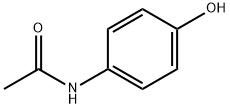

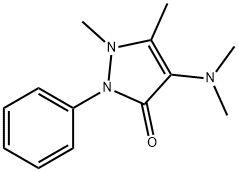

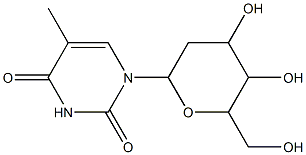
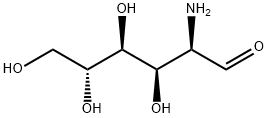
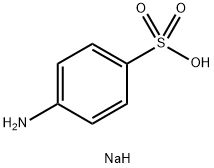

You may like
-
 1-Aminopyrene CAS 1606-67-3View Details
1-Aminopyrene CAS 1606-67-3View Details
1606-67-3 -
 1-Aminopyrene CAS 1606-67-3View Details
1-Aminopyrene CAS 1606-67-3View Details
1606-67-3 -
 1-Aminopyrene CAS 1606-67-3View Details
1-Aminopyrene CAS 1606-67-3View Details
1606-67-3 -
 1-Aminopyrene (purified by sublimation) CAS 1606-67-3View Details
1-Aminopyrene (purified by sublimation) CAS 1606-67-3View Details
1606-67-3 -
 1-Aminopyrene CAS 1606-67-3View Details
1-Aminopyrene CAS 1606-67-3View Details
1606-67-3 -
 (3R,4R)-1-benzyl-N,4- dimethylpiperidin-3-amine 477600-70-7 99%View Details
(3R,4R)-1-benzyl-N,4- dimethylpiperidin-3-amine 477600-70-7 99%View Details
477600-70-7 -
 Ortho Phenylene Diamine (OPDA) 95-54-5 99%View Details
Ortho Phenylene Diamine (OPDA) 95-54-5 99%View Details
95-54-5 -
 77-78-1 99%View Details
77-78-1 99%View Details
77-78-1